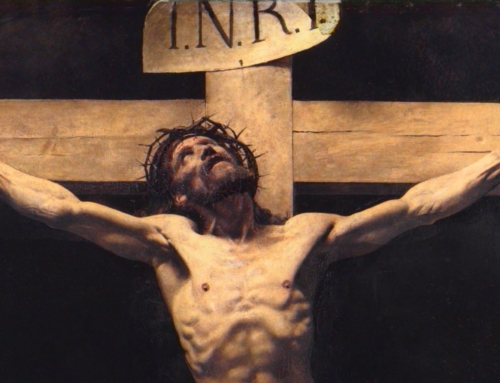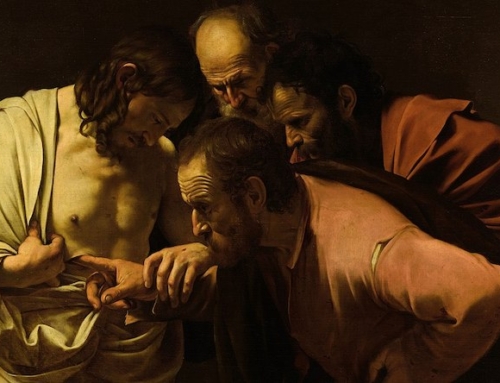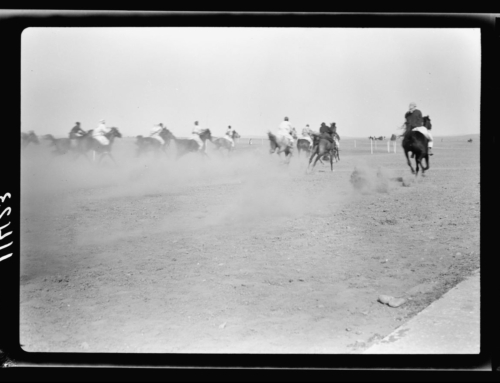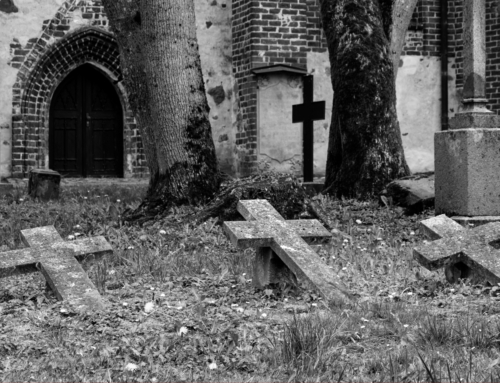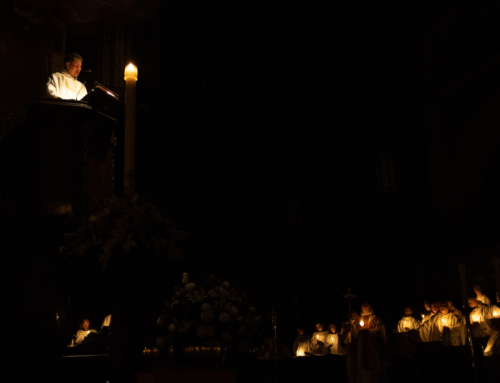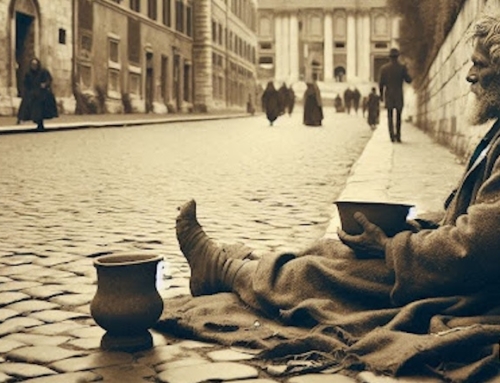No, that’s not a typo. “Jorrow” is a term meant to capture the ties that bind the Joyful and Sorrowful Mysteries. For bound they are.
Just think, for example, about the Joyful Mysteries themselves, and the experience of perturbation, grief, and affliction found within them. Not that these emotions dominate, but they’re certainly present: the fact that the Archangel’s greeting troubles Mary initially, or Simeon’s prophecy to Mary of a sword-pierced heart.
These distinctly non-joyful moments ripple out from the Joyful Mysteries and make them more realistic. Although we tend to draw a rigid distinction between joy and sorrow—we could easily define one as the absence of the other—we actually find that in everyday life it’s rarely an either-or. Sometimes they even show up concurrently, just as the rain can fall when the sun is shining.
Lent is a jorrowful season, organized around not only sorrow and penance for sin but also the joy of remembering that the glory of the Resurrection lies in store. In accord, here are reflections about the ways in which the Sorrowful and Joyful Mysteries speak to one another, and together proclaim truths about Divine Love that neither can fully contain on its own. (And since the best preparation for Easter takes place in the Confessional, each section concludes with a question taken from Pope Francis’ tips on making a good examination of conscience, in preparation for the sacrament of Reconciliation).
- The First Mysteries: The Annunciation & Agony in the Garden
Two wrongs don’t make a right, but two yeses can reverse a no. These Mysteries reveal the world’s most profound moments of self-abandonment into the hands of He who knows us better than we know ourselves—which was precisely the truth Adam and Eve failed to remember when they said no to God, deceived into believing their Creator did not have their best intention in mind. But Mary’s assent to God’s plan at the Annunciation enables our Redeemer, the New Adam, to enter our world in the flesh. Christ’s submission to the Father’s will at Gethsemane, in turn, shows us that whatever the Father wills for us, no matter how arduous it may seem, is somehow, some way, intended for our ultimate good. So let’s let God be God.
Do I rebel against God’s plan?
- The Second Mysteries: The Visitation & Scourging at the Pillar
Before abandonment comes openness. God can and does make Himself present, but we must have hearts open to recognize Him. Old and barren, Elizabeth no longer expected God could bless her with a child. But God reverses her and Zechariah’s disappointment in dramatic fashion. Her joy reaches its peak with Mary’s visitation. Whereas Mary, the creature, comes bearing the Creator, the scourging at the pillar is motivated by the creatures’ condemnation of the Creator. Jesus does not meet the expectations of the high priests and scribes, so they turn over God’s Son to Pilate to preserve their self-generated, false images of the messiah. Thus, when our false ideas about God are proven wrong, it can be for us, like Elizabeth, a blessing—or, as for the high priests, a stumbling block.
Am I part worldly and part believer?
- The Third Mysteries: The Nativity & Crowning with Thorns
Christmas prefigures Calvary; the wood of the manger is also the wood of the cross. But before Jesus takes up the cross, He first submits to the woody thorns of the Roman soldiers’ mock-crown. Out of utter humility, God chose to be born in the lowliest of worldly places and circumstances. The same humility animates His silent acceptance of the soldiers’ derision. Is this weakness? On the contrary, it is the product of strength and self-possession, the kind that makes one appear lowly in the world’s estimation but mighty in the Father’s eyes, for it is motivated by love of Him.
Do I want to be served?
- The Fourth Mysteries: The Presentation & Carrying of the Cross
In the movie The Passion of the Christ, when Jesus is first confronted with the cross, He collapses to His knees, embracing it—almost with relief, as if finally beholding His beloved. Similarly, the aged Simeon clasps the infant Christ in the Temple with delight, relief, and a sense of purposeful finality. This is it, at last. Someday, we’ll each be presented with our own end. We’ll only get one chance to die well. How can we do that without some practice? The more we die to ourselves—to our grudges, rash judgments, self-interest—the more death will be a means rather than an end. A means to get to Him for Whom we’ve been dying to ourselves all our lives long, out of love for Love Himself.
Do I only turn to God when I’m in need?
- The Fifth Mysteries: The Finding in the Temple & Crucifixion
Twice Christ goes missing for three days’ time—in the Temple and the tomb. In our spiritual life, we’ll sometimes feel lost, as if abandoned by God. But feeling lost is not the same as being nothing. Remember: God acted first, and He holds us in being. We did not decide to be born; He fashioned us. All of our life, therefore, is our response to Him. From God we have come and to God shall we return. The surest way back? By the cross. There’s no more jorrowful, more authentic path.
Do I begin and end the day with prayer?
✠
Image: Fr. Lawrence Lew, O.P., Missionary’s Rosary


